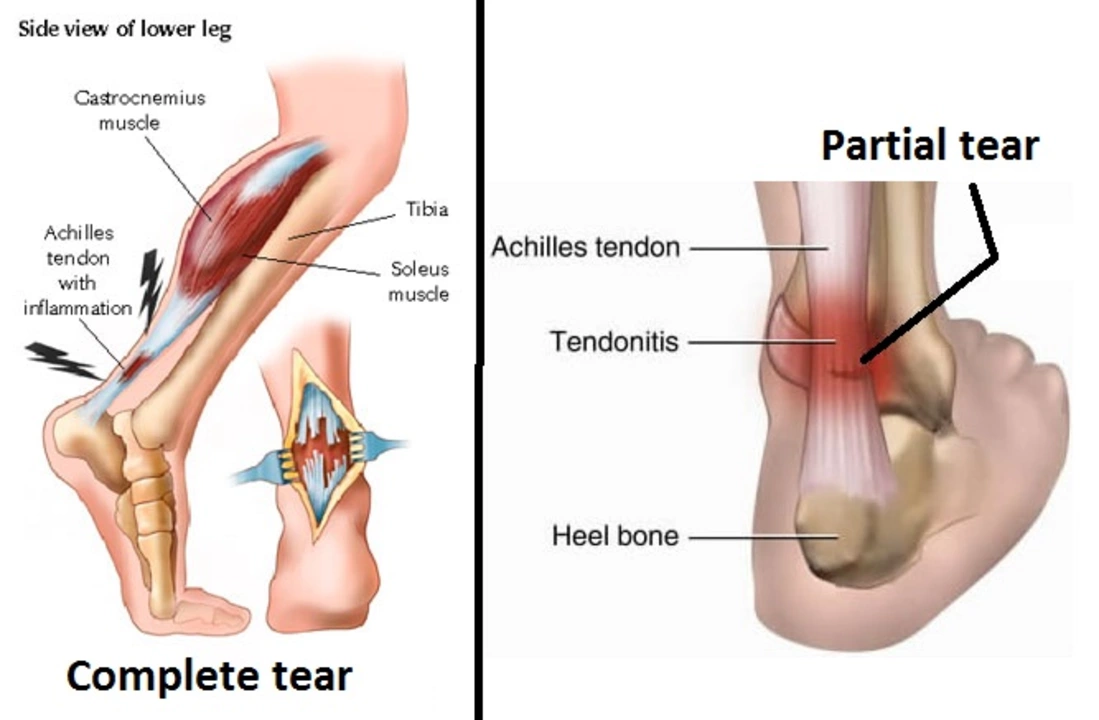The Benefits of Stretching for Tendonitis Prevention and Recovery
 May, 21 2023
May, 21 2023
Understanding Tendonitis and Its Causes
Tendonitis is a painful condition that affects the tendons, which are the thick cords that connect our muscles to our bones. It occurs when the tendons become inflamed or irritated, leading to pain and discomfort. There are various factors that contribute to the development of tendonitis, including repetitive movements, overexertion, age, and poor posture. In this section, we'll dive deeper into what tendonitis is, its causes, and how stretching can play a crucial role in preventing and recovering from this condition.
The Science Behind Stretching and Tendon Health
Stretching is an essential component of maintaining good tendon health. When we stretch, we're not just stretching our muscles, but also our tendons. This helps to improve flexibility, range of motion, and overall joint health. A recent study has shown that regular stretching can help improve the blood flow to our tendons, resulting in better nutrient delivery and waste removal. This, in turn, can help to prevent tendonitis and aid in the recovery process. In the following sections, we will discuss specific stretching techniques that can be beneficial for tendonitis prevention and recovery.
Dynamic Stretching for Tendonitis Prevention
Dynamic stretching involves moving your muscles and tendons through their full range of motion in a controlled manner. This type of stretching is especially beneficial for tendonitis prevention as it helps to improve blood flow, reduce stiffness, and increase flexibility. Some examples of dynamic stretches include leg swings, arm circles, and walking lunges. It's essential to incorporate dynamic stretching into your daily routine, especially before engaging in any physical activity, to minimize the risk of developing tendonitis.
Static Stretching for Tendonitis Recovery
Static stretching involves holding a stretch for an extended period, usually around 30 seconds or more. This type of stretching is particularly helpful for tendonitis recovery as it helps to lengthen the muscle fibers and tendons, reducing tension and promoting healing. Some examples of static stretches that can aid in tendonitis recovery include the calf stretch, hamstring stretch, and wrist flexor stretch. Be sure to perform static stretches after your workout or during your cool-down routine to support the recovery process.
Targeted Stretching for Common Tendonitis Areas
It's important to focus on stretching the specific areas that are most prone to tendonitis. Some common tendonitis-prone areas include the wrists, elbows, shoulders, knees, and ankles. In this section, we'll discuss targeted stretches for these areas to help prevent and recover from tendonitis. For example, wrist extensor and flexor stretches can help alleviate wrist tendonitis, while quad and hamstring stretches can be beneficial for knee tendonitis. By incorporating these targeted stretches into your routine, you can better protect yourself from tendonitis and support your recovery.
Stretching to Improve Posture and Alignment
One of the contributing factors to tendonitis is poor posture and alignment. Stretching can help correct these issues by lengthening tight muscles and promoting proper joint alignment. Some stretches that can help improve posture include the chest opener, neck and shoulder stretches, and hip flexor stretches. By incorporating these stretches into your routine, you can effectively reduce your risk of developing tendonitis and support your recovery process.
The Role of Consistency and Patience in Stretching
When it comes to preventing and recovering from tendonitis, consistency and patience are key. It's essential to incorporate stretching into your daily routine and be patient with the process, as improvements in flexibility and tendon health may take time. It's also crucial to listen to your body and modify your stretching routine as needed. If a certain stretch causes pain or discomfort, be sure to adjust it or try a different stretch that targets the same muscle group. Remember, the goal is to promote healing and prevent further injury, so always prioritize your comfort and safety.
Seeking Professional Guidance for Stretching and Tendonitis
If you're unsure about the proper stretching techniques or need guidance in developing a stretching routine tailored to your needs, seeking professional help can be beneficial. A physical therapist or certified personal trainer can help assess your individual needs and provide guidance on the most effective stretches for tendonitis prevention and recovery. Remember, it's always better to be safe and seek expert advice when it comes to your health and well-being.

Abigail M. Bautista
May 21, 2023 AT 18:40Jelisa Cameron- Humphrey
May 22, 2023 AT 14:55Lee Lach
May 23, 2023 AT 12:38Tracy McKee
May 25, 2023 AT 03:53Rohan Puri
May 26, 2023 AT 16:17Chris Bellante
May 28, 2023 AT 14:58Nicole Manlapaz
May 29, 2023 AT 13:44Frederick Staal
May 29, 2023 AT 22:57erin orina
May 31, 2023 AT 11:09Lisa Uhlyarik
May 31, 2023 AT 16:29Kelley Akers
June 1, 2023 AT 08:29Cameron Perry
June 1, 2023 AT 23:01JOANNA WHITE
June 3, 2023 AT 03:08Peggy Cai
June 3, 2023 AT 10:21Taylor Smith
June 4, 2023 AT 02:27Tammy Cooper
June 4, 2023 AT 07:36Jelisa Cameron- Humphrey
June 4, 2023 AT 15:12